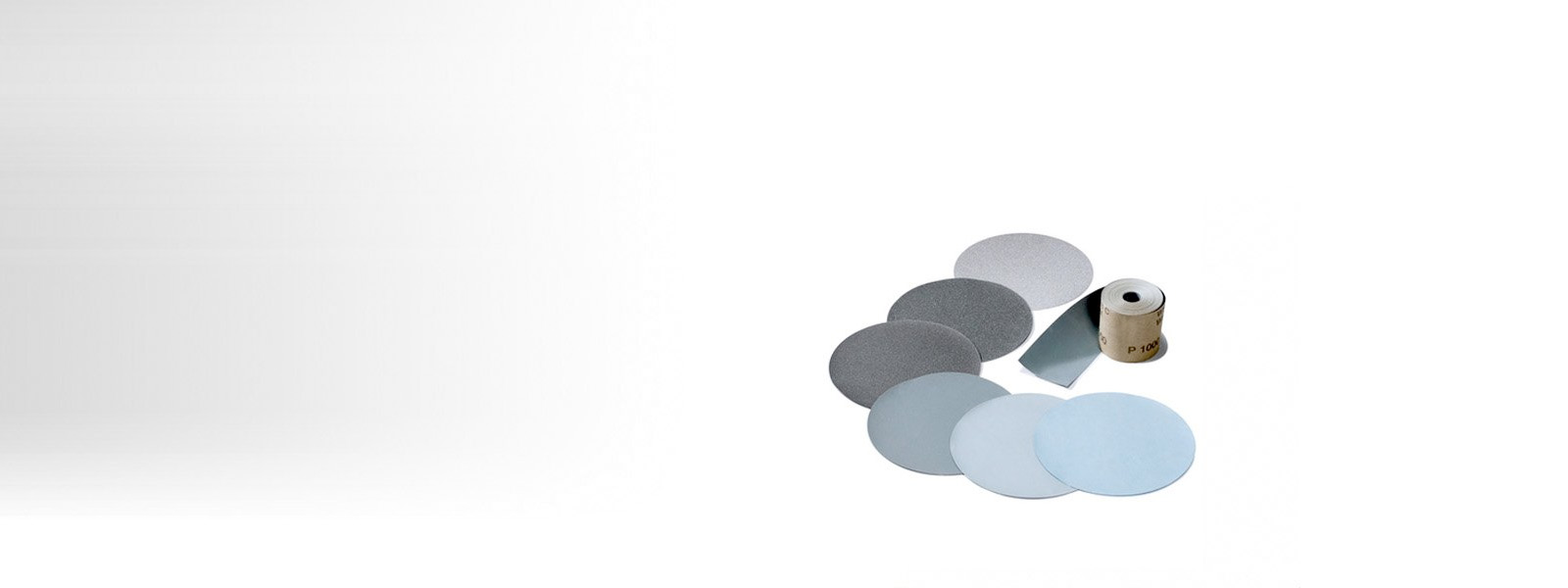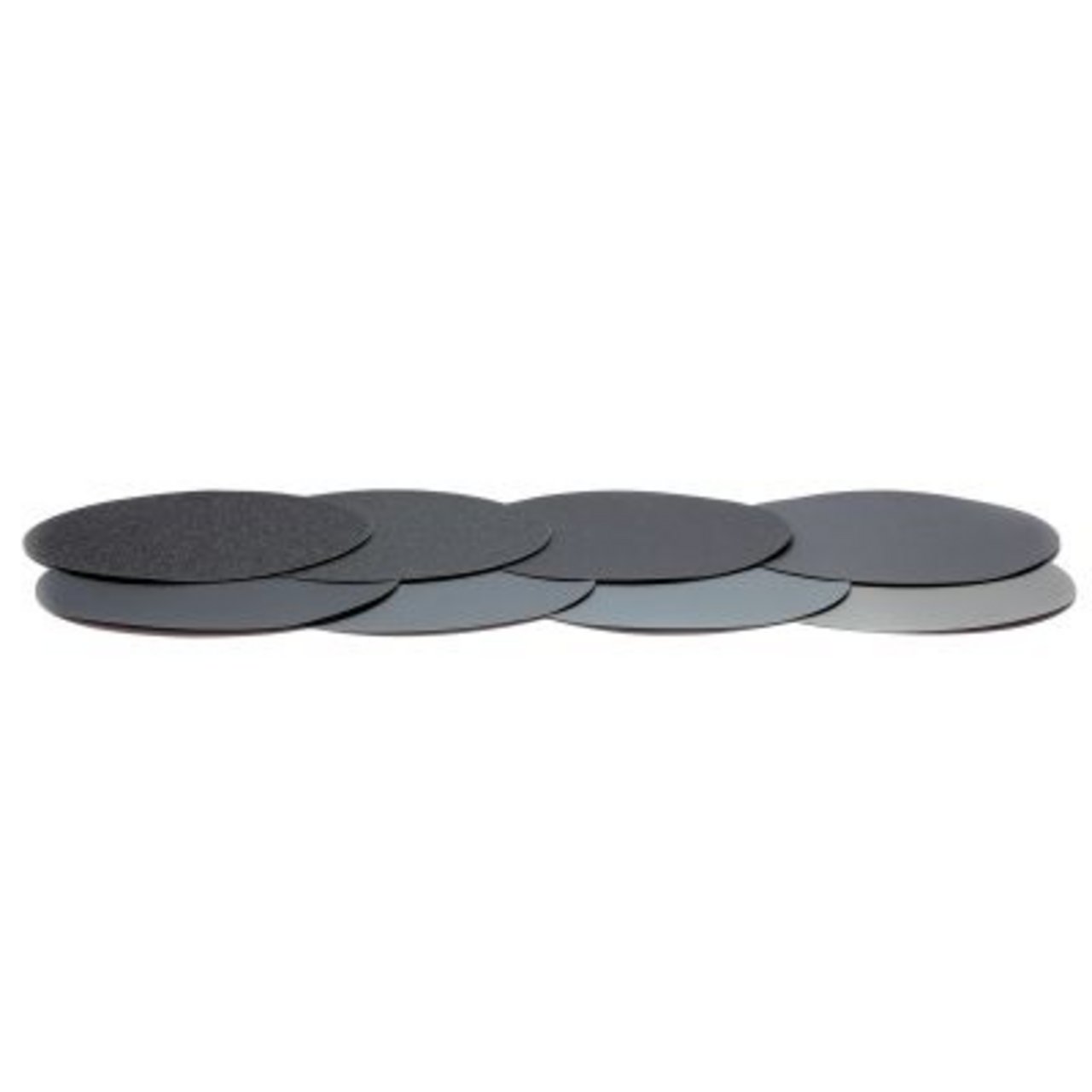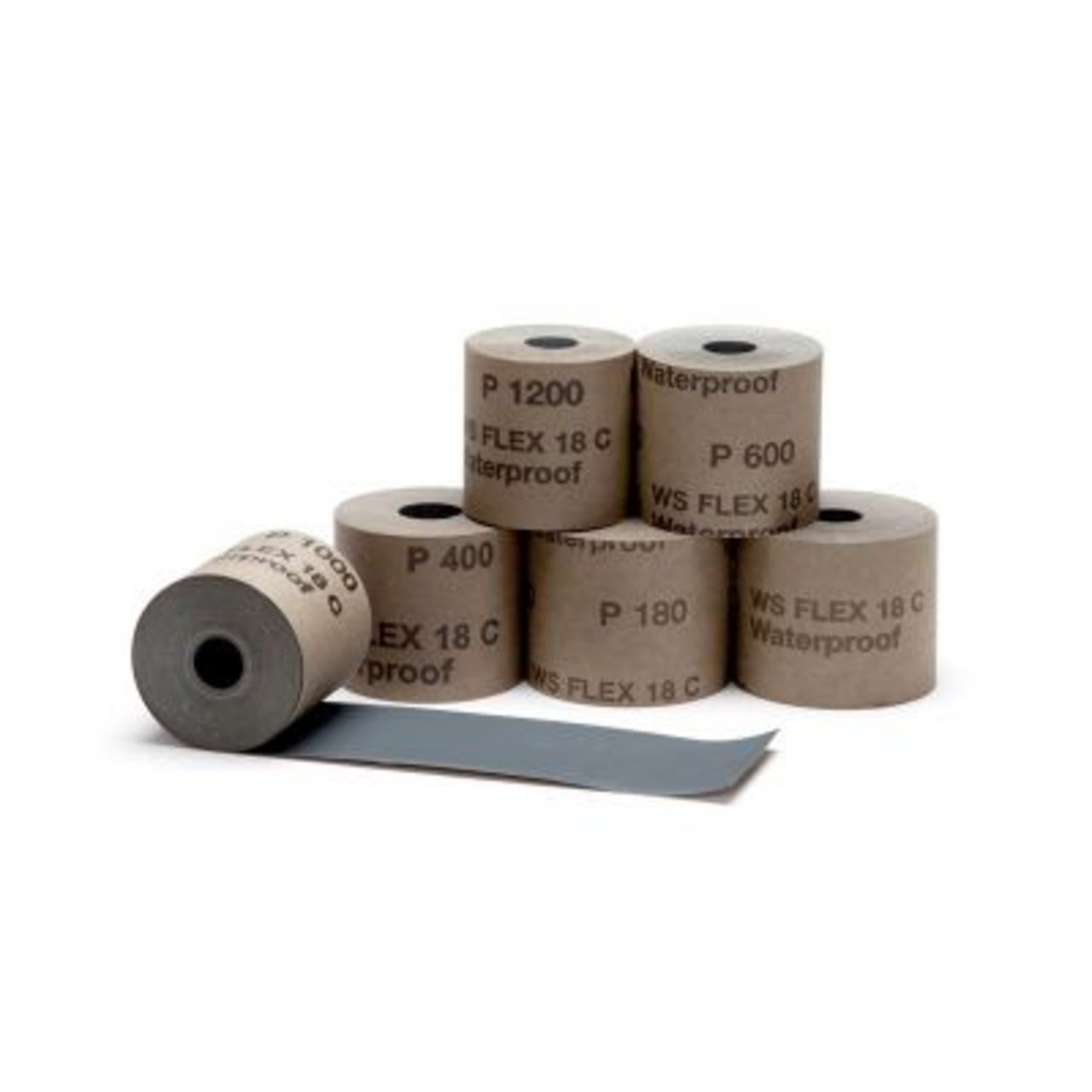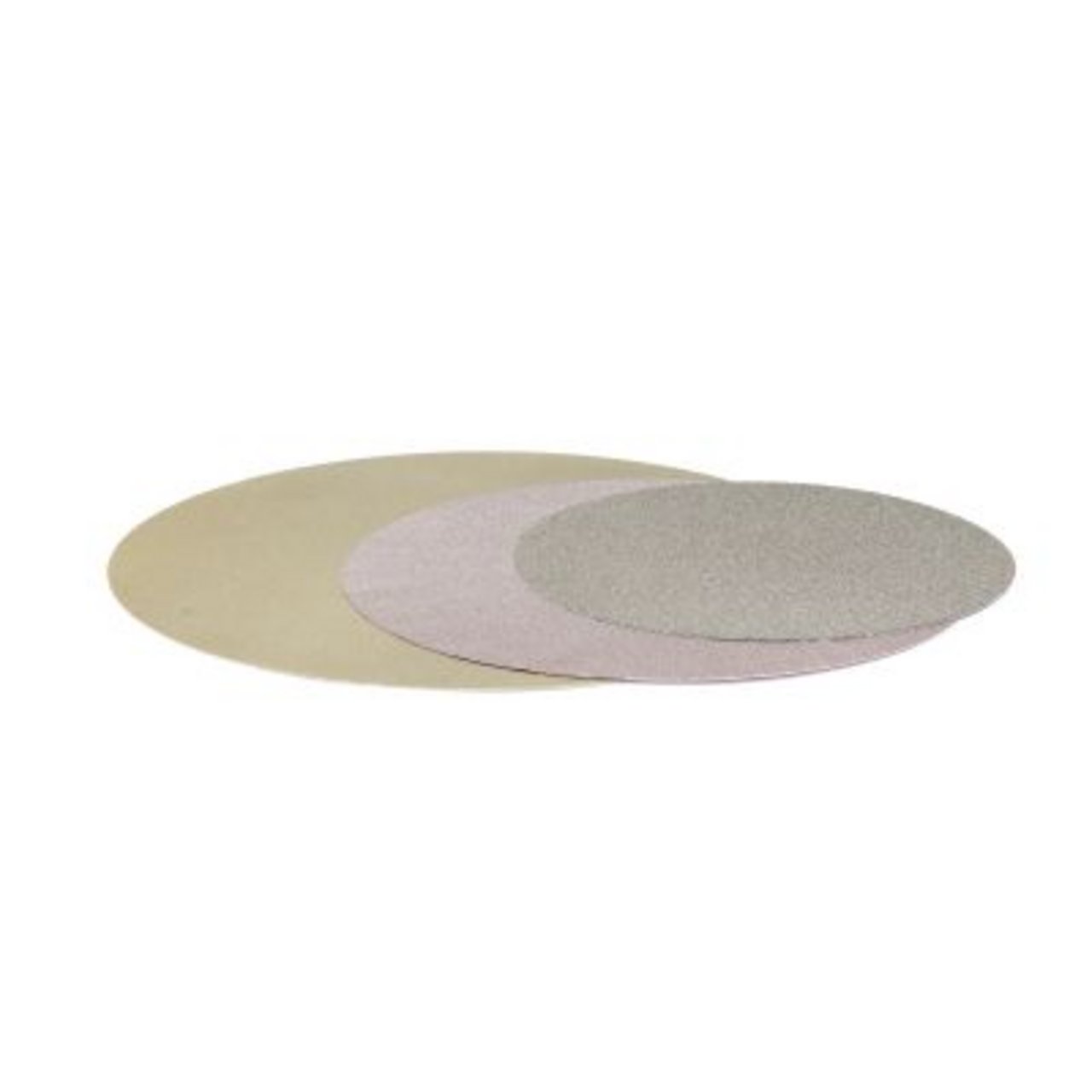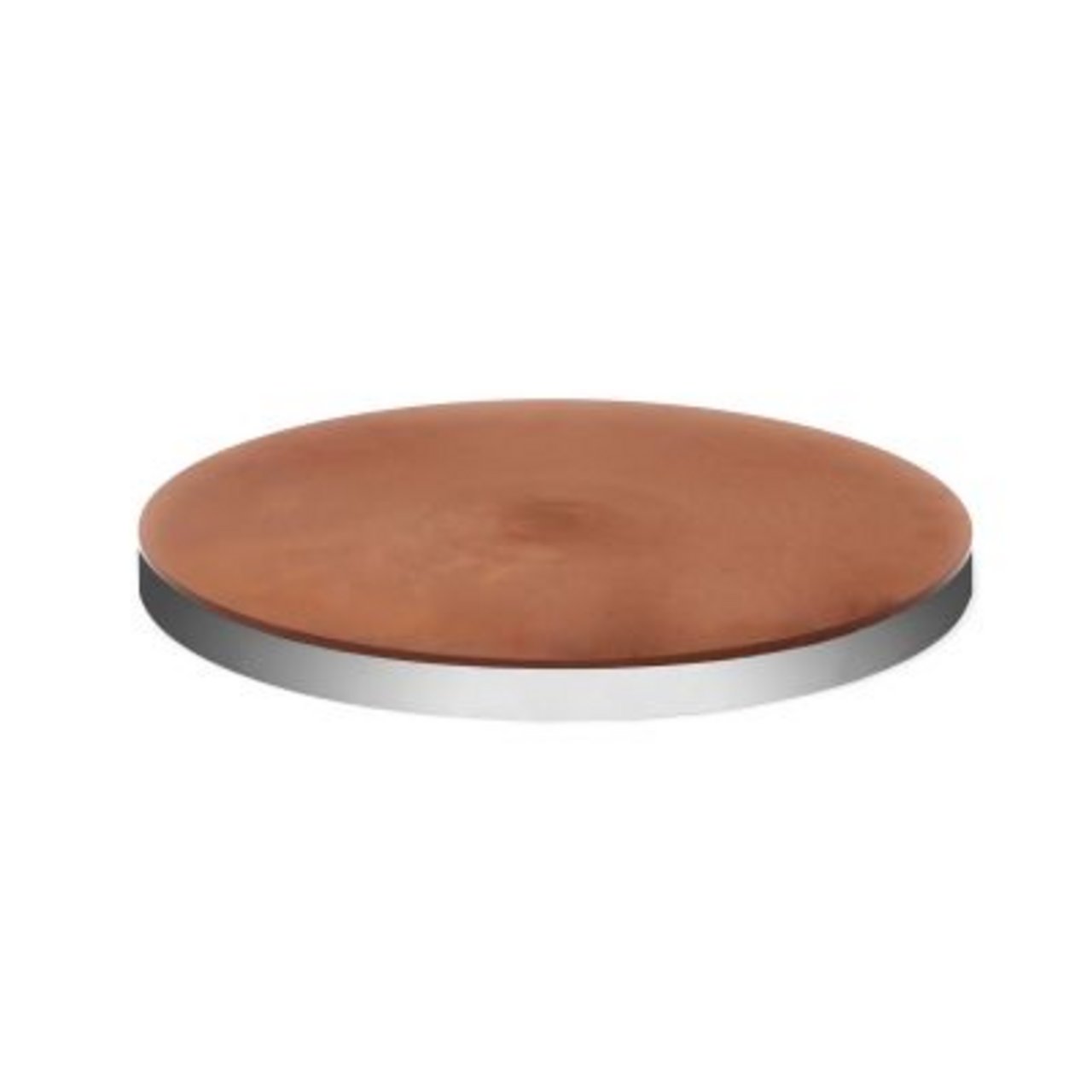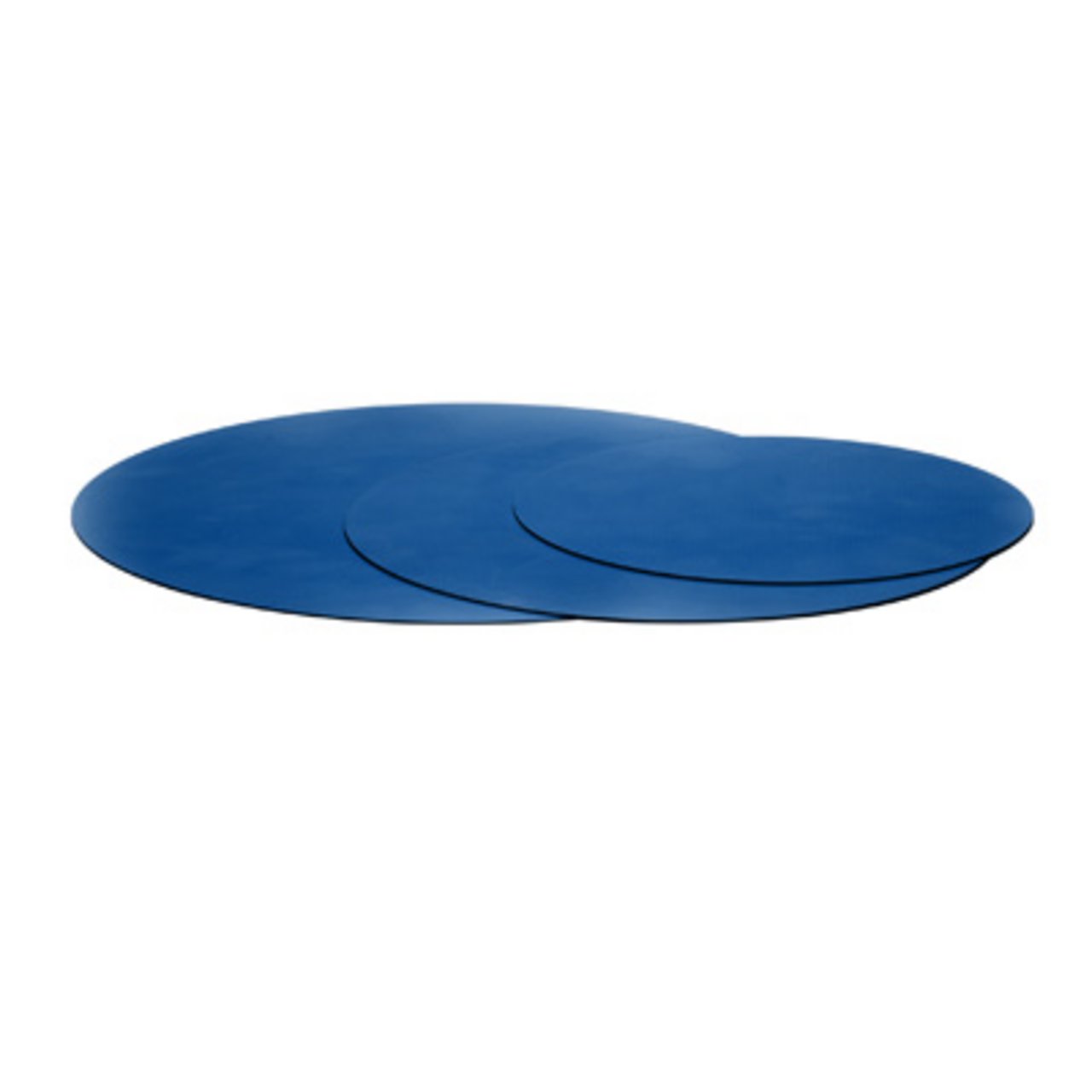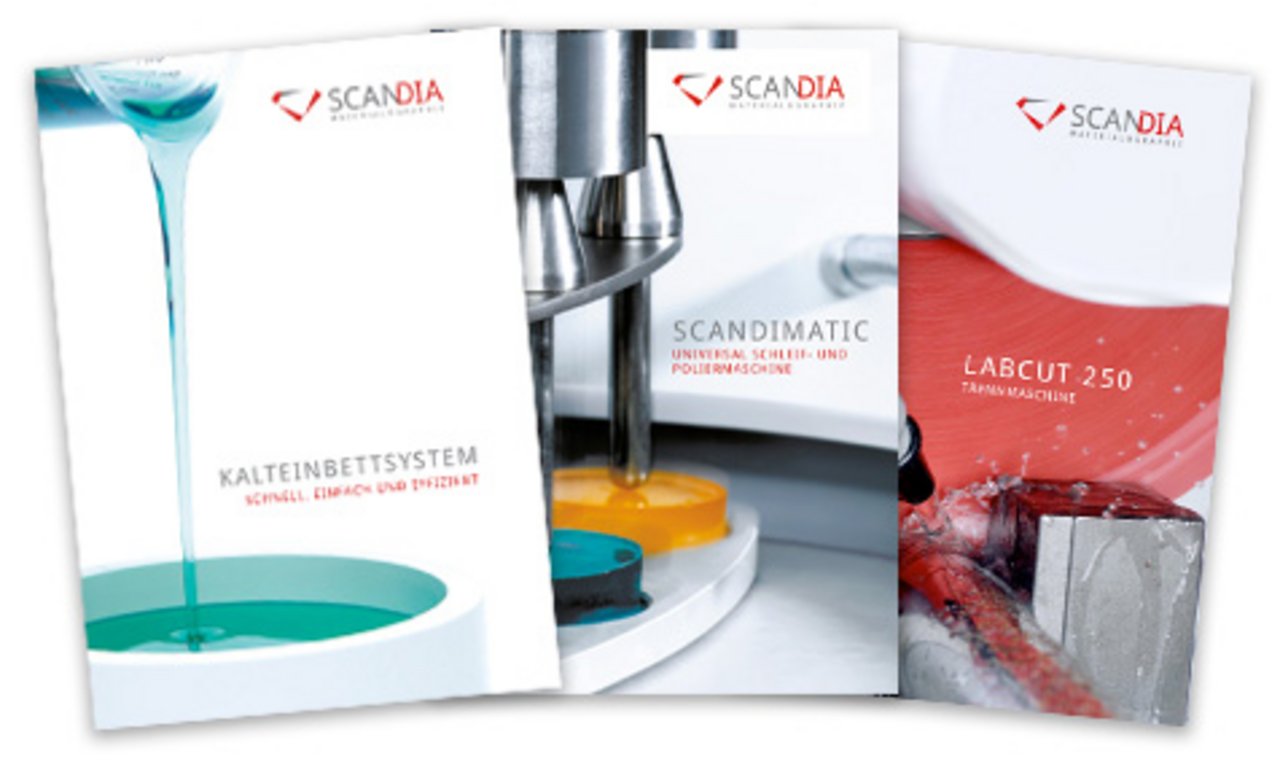The mechanical grinding process using metallographic abrasives consists of pre-grinding and fine grinding. During this grinding process, waterproof abrasive papers, abrasive films, or grinding discs are typically used. They contain an abrasive which is firmly bound to the base.
The basic principal for any material removal process is coarse-to-fine machining. Gradually, and with ever decreasing grain sizes, each and every grinding step removes the preceding surface deformation. This procedure is repeated until a surface roughness is obtained which allows a smooth transition to polishing.
The SCAN-DIA product range offers the most appropriate abrasive for every material. A very commonly used metallographic abrasive is silicon carbide, SiC. Diamond, bound in pre-grinding films or pre-grinding discs, is also frequently used in cases in which a harder abrasive is required. Cubic boron nitride (CBN) is particularly used for the grinding of ferrous materials.
An economic grinding processis characterized by short grinding times and as few grinding steps as possible. Depending on the type of material to be grinded, a substitution of the typically used SiC grinding papers by considerably harder diamond pre-grinding is an alternative. The high standards for SCAN-DIA's metallographic abrasives are guaranteed by regular quality and suitability tests.
You will find more information and an overview of our metallographic abrasives in the SCAN-DIA special brochure "Polishing System".
Information
In the field of materialography, part of materials sciences, the structure of ferrous and non-ferrous materials (such as composites, ceramics, and plastics) is studied.
"Metallography" is the study of purely metallic materials.
Materialography wants to quantitatively and qualitatively analyze microstructures by means of various microscope technologies. Statements are made relating to the microstructure as well as to the properties of a material.
First step of the work process is the sample preparation. A material sample is prepared for the microscopic examination of its crystalline structure.
A scratch-free polished section providing a sharp and smooth sample surface is produced, allowing for a representative observation of the material structure. During the preparation, it is particularly important to avoid deformation, smearing, or scratches. Therefore, precise working is required using high quality grinding, polishing, and cleaning agents. Furthermore, depending on the observation criteria, the section may be etched using various solutions.
In general, the materials scientist needs a broad knowledge of material properties, material production, and further material processing in order to avoid preparation errors and errors during the structural analysis.
Materials scientists work in the fields of quality assurance, in failure analysis, and in the research and development domain.
The microscopic examination of the materials provides important conclusions on the production conditions and thus helps to assess production processes as well as to shed light on cases of failure. Moreover, the results of materialographic research build the basis for the development of new materials that are optimally adapted to their respective operating conditions.
Contact
Our experts are happy to answer your questions. SCAN-DIA has a dedicated team of professionals who provide in-depth expertise to offer you personalised support and ensure you get the best possible solution.
Whether you have questions about SCAN-DIA products, technical problems or industry issues, don't hesitate to call. They will be happy to help you with your concerns.

